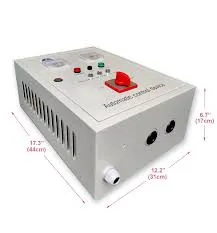The Versatile Uses of Splicing Tape
Splicing tape is a specialized adhesive tape designed for a variety of applications, primarily in the realm of joining materials seamlessly. While it may not be as well-known as duct tape or masking tape, splicing tape has garnered significant attention in industries such as manufacturing, electronics, and multimedia. Its unique properties and versatility make it an indispensable tool for professionals and DIY enthusiasts alike.
What is Splicing Tape?
Splicing tape is often characterized by its thin, flexible nature and strong adhesive properties. It comes in several types, including paper, plastic, and polyester substrates, each engineered to suit specific applications. The tape typically features a durable, low-profile design, making it ideal for splicing together different materials without adding significant bulk or weight. Additionally, it is available in various widths and lengths, allowing users to select the right dimensions for their specific tasks.
Applications of Splicing Tape
1. Film and Media Production One of the primary uses of splicing tape is in the film industry. Historically, editors would rely on larger reels of film that needed to be cut and joined together. Splicing tape enabled seamless connections that preserved the integrity of the film. Today, splicing tape is still widely used to repair damaged film or to join multiple films without the risk of noticeable seams. Its transparent nature allows for minimal interference with the visual quality of the film, making it essential for preserving cinematic art.
2. Electrical and Electronics In the world of electronics, splicing tape offers a reliable solution for joining wires and cables. The tape's insulation properties allow it to provide protection against electrical currents, thereby enhancing safety. It is also invaluable in the production of printed circuit boards (PCBs), where it is used to attach and secure components without soldering. This application necessitates precision, and splicing tape delivers an effective means of maintaining the integrity of the electronic device.
3. HVAC and Insulation Splicing tape is commonly employed in heating, ventilation, and air conditioning (HVAC) systems. Contractors use it to join ductwork and ensure that air moves efficiently throughout a building. The tape’s high-temperature resistance and durability make it ideal for sealing connections. Additionally, it is often used in insulation applications to bind materials like foil and fiberglass, optimizing energy efficiency and enhancing comfort within spaces.
splicing tape use

4. Textiles and Apparel In the fashion and textiles industry, splicing tape is used to join fabric pieces, create hems, and reinforce seams without the need for stitching. This method is particularly advantageous for delicate fabrics that may be damaged by sewing machines. Designers appreciate the clean finish that splicing tape provides, allowing for more intricate designs and streamlined production processes.
5. Crafts and DIY Projects Beyond industrial applications, splicing tape has found its place in the realm of hobbies and crafts. Crafters utilize the tape to achieve smooth edges and invisibly bond materials together. Whether it’s for scrapbooking, model building, or creating handmade gifts, splicing tape’s strong adhesion and minimal visibility can elevate the quality of the finished project. Its ease of use and availability in various colors and styles also make it a favorite among DIY enthusiasts.
Advantages of Using Splicing Tape
The benefits of using splicing tape extend beyond its adaptability. Its ease of application reduces the time and labor required in many projects. Unlike traditional fastening methods, splicing tape does not require special tools, and it can be cut to the desired length with simple scissors. The tape’s resistance to peeling and curling ensures that joints remain secure over time, providing peace of mind for users.
Furthermore, splicing tape is designed to be lightweight yet durable, making it an ideal choice for applications where weight is a concern. This characteristic is particularly advantageous in the aerospace and automotive industries, where every gram counts.
Conclusion
In conclusion, splicing tape is an essential tool across numerous industries and applications. From film editing to electrical installations and creative crafting, its versatility and strength make it a preferred choice for professionals and enthusiasts alike. By understanding the diverse uses of splicing tape, one can harness its potential to improve the quality and efficiency of many projects. Whether you are embarking on a home improvement endeavor or working on a large-scale manufacturing task, splicing tape can be a dependable ally in achieving seamless results.
-
Self Amalgamating Tape: Redefining Electrical Insulation and ProtectionNewsAug.07,2025
-
Seal Strip Solutions: Revolutionizing Energy Efficiency and Comfort in Modern BuildingsNewsAug.07,2025
-
High Voltage Electrical Tape: Powering Safety and Reliability in Modern InstallationsNewsAug.07,2025
-
Flex Tape Waterproof: Transforming the Future of Instant RepairsNewsAug.07,2025
-
Elevate Electrical Safety Standards with High-Performance PVC Electrical TapeNewsAug.07,2025
-
Butyl Rubber Tape: The Ultimate Solution for Reliable Sealing and WaterproofingNewsAug.07,2025
